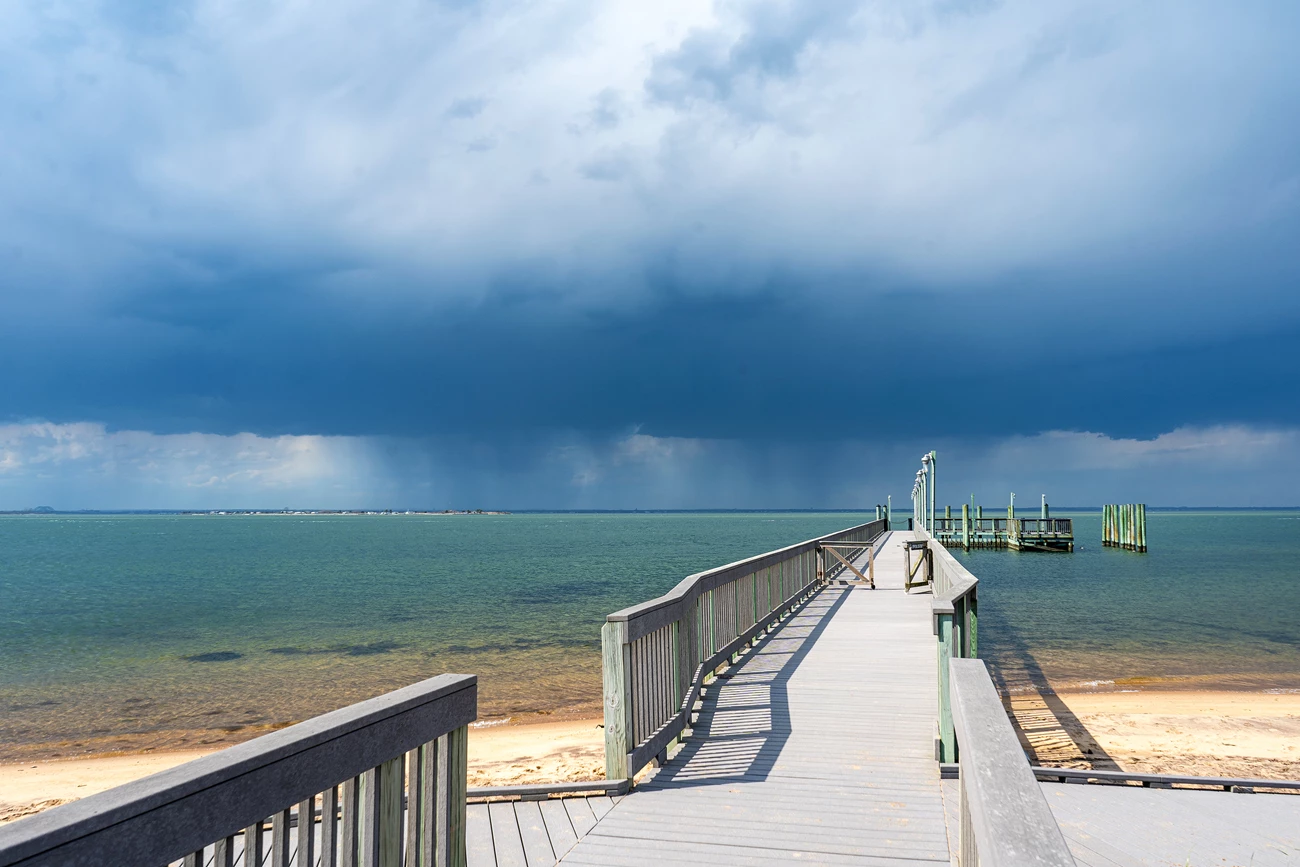Last updated: September 3, 2024
Article
Stormy Weather
Nor'easters in New England. Cold fronts in Texas. Orange streams in Alaska. In this issue, we see how park and partner scientists are working to understand extreme weather impacts. And how other kinds of extremes can affect our practice of science.

Image credit: NPS
If I had to pick one theme running through this issue, it would be extremes. Extreme weather for one. Because as author Catherine Schmitt tells us, that’s how we each personally experience climate change. I was in New York City in 2012 when Hurricane Sandy hit. I spent much of that experience in a stairwell. That’s because the supposedly fortified glass windows in my apartment were shaking alarmingly from the storm raging outside. The next morning, the cars in front of my building were in water up to the door handles. As Schmitt points out, many of us have stories like that, and sharing them is a good way to start talking about climate science.
Sometimes, parks don’t know as much as they need to about threats accelerated by climate change, like landslides, until someone takes the time to study them, as Jonathan Malzone’s article relates. With knowledge comes the power to take actions that work. Whether they’re to protect songbirds from dying needlessly because we love our picture windows, as Reimer and coauthors tell us. To foster healthy pollinator populations like fledgling scientists Grace Kowalski and Nina Crawford did. To improve safety for those who study radioactive fossils, as in Karina Rapp’s story. Or, as Nicole Frey and Chad Wildermuth point out, to protect wildlife from well-meaning but misguided attention.
Parks are intimately connected to the landscapes around them and to the broader global climate. For some, the impacts of this are as vivid and unnerving as the Alaskan orange streams in Nina Chambers’ article. How healthy a park wetland is could affect flood water levels and the safety of nearby communities, as the lead feature article by Jason Flynn and Lauren Gibson illustrates. Extreme cold weather from the north has had a devastating impact on an ancient and globally imperiled species in the south, the green sea turtles talked about in Donna Shaver and J. Shelby Walker’s story. The article by Jeb Wofford and Evan Childress tells us that some eastern rivers are losing valuable native fish because the water is too warm.
People from different jurisdictions are coming together to save species essential to our nation’s character.
But hope, as Emily Dickinson said, is the thing with feathers. It prevails. In some cases, it manifests when scientists and land managers cooperate to protect resources pushed to the extreme. People from different jurisdictions are coming together to save species essential to our nation’s character. Like the long-lived whitebark pine in the story by the Five Needle Pines Team. Or the immense sagebrush habitat described by Tom Rodhouse and colleagues. Both of these stories and the lead feature show how recent federal funding through the Bipartisan Infrastructure Law and the Inflation Reduction Act has energized critical work like this.
Other stories in this issue are about work with a different kind of national or global impact. One is Avani Skye Fachon’s delightful tale of restoring eelgrass on the Pacific coast and the otters who appreciate it. Another is Catherine Cooper and Janine da Silva’s animated yarn about sharing a beloved sailing ship with the entire world through 3D imaging. A third is Sara Melena and Eva DiDonato’s description of a key behavioral science study on conveying information about environmentally friendly sunscreen. You may feel the urge to check the ingredient list on your own bottle.
As dramatic as the physical impacts of climate change can be, it’s the mental, emotional, and social consequences that stay with us. That’s the message in the article by Julianne Reas and colleagues, who point out the wisdom of finding scientifically sound tools to prepare for the personal toll of a disaster before it hits. One of these may be finding a quiet place, something Jessica Weinberg McClosky says parks can actually map in three dimensions. But, as Michael Whiteman-Jones reveals, our life experiences and historical legacy may convince us to adopt extreme views, influencing how we and others look at science in the first place. Our biases can blind us to other ways of knowing and destroy trust. Yet being open to change and listening to what others have to say, Lina Fink reassures us, can go a long way to restoring it.

About the author
Marie Lawrence is the editor of Park Science magazine.
